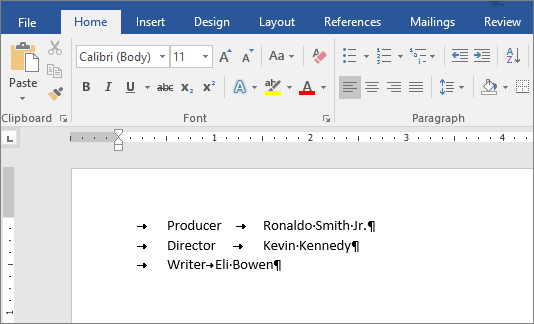

One such instance is in the header/footer, where you need to align different parts of a line differently. Only in very special circumstances do you use tab stops. Generally, when writing documents, you use indent, and not tab stops. While pressing Tab means 'please insert a Tab for me, or do something else if you prefer', Ctrl+Tab means 'insert the Tab character for me, and for God's sake, do nothing else'. Or, simply press Ctrl+Tab instead of Tab. To override this, use the 'smart tag' that appears (in recent versions of Word) when Word has automatically changed the indent instead of inserting your tab character. And, of course, this paragraph formatting will reproduce and affect every new paragraph created by pressing Enter inside this paragraph. And so Word automatically does that instead. Now, however, sometimes when you press the tab key (IIRC, chiefly when the caret is at the beginning of a line that already has text on it), Word figures that you actually don't want a tab character inserted, but rather would like to change the indent. Using the three 'sliders' to the left on the ruler, you can change the left indent, the indent of the first line in the paragraph, and the hanging indent. Using the ruler, you can also change the indent of the current paragraph, and paragraphs created by typing Enter inside this paragraph. For instance, by default, in the header/footer, there are two pre-defined tab stops: one centred at the middle of the page, and one right-aligned at the right margin of the page. Among other things, you can make tab stops aligned in different ways. As you probably know, you can add/remove/adjust tab stops manually using the horizontal ruler. Normally, the tab key inserts a tab character (character 9) into the document, which means that the insertion point is moved to the next tab stop.


 0 kommentar(er)
0 kommentar(er)
